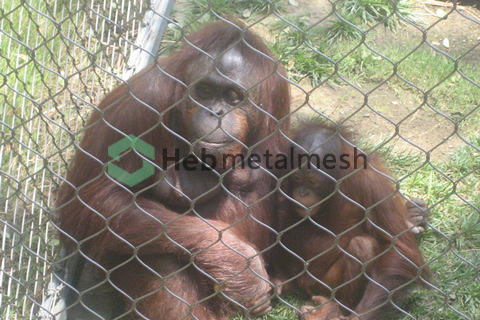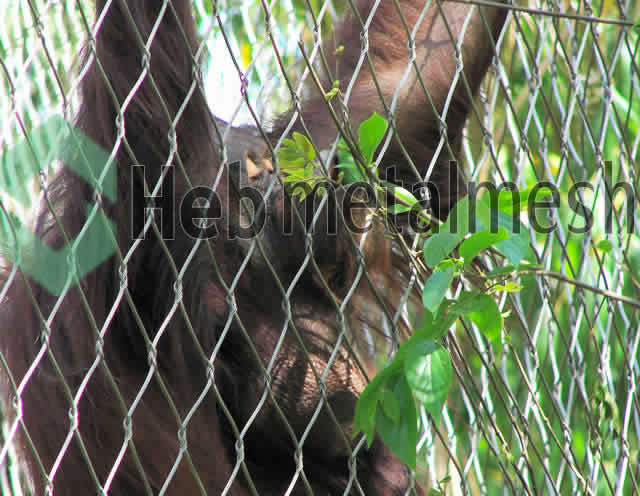Introduction to Gorilla Habitat Projects
Gorilla habitat projects are essential initiatives aimed at promoting the well-being of gorillas in captivity by designing enclosures that closely resemble their natural habitats. These projects are significant not only for the welfare of the animals but also for the broader objectives of wildlife conservation. By creating environments that reflect the complexities of the gorillas’ native ecosystems, caretakers can encourage natural behaviors and enhance the overall quality of life for these magnificent creatures.
In the wild, gorillas inhabit dense forests where they forage for food, build nests, and interact socially within their groups. Mimicking these settings in captivity requires thoughtful planning and consideration of various elements, such as vegetation, terrain, and social structures. The success of a gorilla habitat project hinges upon the ability to provide an enriching environment that allows for physical, mental, and social stimulation. This not only aids in the physical health of the gorillas but also mitigates stress and promotes naturalistic behaviors.
Furthermore, gorilla habitat projects play a pivotal role in education and awareness. By designing enclosures that reflect the natural habitats of gorillas, institutions can create a deeper understanding among visitors regarding the importance of conservation efforts. When people observe gorillas thriving in environments reminiscent of their wild homes, it fosters an appreciation for the species as well as the continuous threats they face in the wild, such as habitat destruction and poaching.
Overall, the objectives of gorilla habitat projects extend far beyond the animals themselves. They serve as a critical bridge in establishing a connection between captive and wild populations while emphasizing the necessity for sustainable practices in conservation. These projects ultimately strive to provide a sanctuary where gorillas can thrive and to inspire future generations to protect their natural habitats.
Key Players in Gorilla Habitat Projects
The success of any gorilla habitat project relies heavily on the collaborative efforts of various organizations and professionals dedicated to the conservation of these magnificent creatures. Zoos around the world have taken on the responsibility of creating safe and sustainable environments that closely mimic the natural habitats of gorillas. Institutions such as the San Diego Zoo, the Smithsonian National Zoo, and the Atlanta Zoo, for example, employ experienced veterinarians, biologists, and animal care specialists who work tirelessly to design enclosures that prioritize both the well-being of the gorillas and the requirements of educational programming for the public.
Wildlife sanctuaries also play a critical role in gorilla habitat projects. Organizations such as the Dian Fossey Gorilla Fund and the Gorilla Rehabilitation and Conservation Education (GRACE) project focus on rescuing and rehabilitating gorillas that have been affected by poaching or habitat destruction. These sanctuaries provide a safe haven where gorillas can live and thrive in a controlled yet natural setting, emphasizing the importance of habitat preservation in their conservation strategies.
Additionally, conservationists and environmental organizations form a vital backbone to gorilla habitat projects. Experts from the World Wildlife Fund (WWF) and the International Gorilla Conservation Programme (IGCP), for example, are deeply involved in promoting conservation efforts in gorilla habitats across Africa. Their work involves not only advocacy for policy changes that protect these areas but also initiatives aimed at local community engagement, educating inhabitants about the importance of preserving gorilla habitats for both ecological balance and sustainable livelihoods.
In conclusion, the synergy between zoos, wildlife sanctuaries, and committed conservationists is paramount in the effective design and implementation of gorilla habitat projects. Each of these players contributes unique expertise and resources, ensuring a comprehensive approach to gorilla conservation that safeguards these species for future generations.
Designing the Perfect Habitat: Principles and Techniques
The design of a gorilla habitat is a critical aspect of animal welfare, requiring a thorough understanding of the needs of these intelligent creatures. To create a suitable environment, several fundamental principles must be addressed, focusing on elements such as space, vegetation, water features, and enrichment opportunities. Each of these components plays a vital role in mimicking a gorilla’s natural environment.
First and foremost, ample space is essential for gorillas, as it allows them to engage in natural behaviors such as climbing, foraging, and socializing. A well-sized enclosure will enable gorillas to explore their surroundings, exercise, and foster social bonds, contributing to their overall health and well-being. The gorilla habitat project should ensure that the enclosure accommodates both solitary and group interactions, accommodating the complex social structure of gorilla troops.
Vegetation is another critical element. Introducing live plants not only enhances the aesthetic quality of the habitat but also promotes the natural behaviors exhibited by gorillas. Dense foliage can provide shelter and areas for privacy, stimulating their instincts to hide and seek. Furthermore, different types of plants can enhance a gorilla’s diet, as they can browse on various types of vegetation, mimicking their foraging habits found in the wild.
Water features enhance the habitat by providing hydration and a place for play, which can be particularly engaging for young gorillas. Naturalistic water sources, such as streams or ponds, further add to the enrichment of their environment, allowing them to bathe or interact socially during water activities.
Finally, implementing enrichment opportunities—activities and stimuli that encourage exploration, problem-solving, or play—is crucial. These can include physical structures, such as climbing trees, access to puzzle feeders, or rotating toys and challenges, which support both their physical and psychological health. By following these principles, the gorilla habitat project not only ensures the welfare of these majestic animals but also aids in their conservation. In conclusion, the thoughtful design of a gorilla habitat is indispensable in providing a safe and enriching environment that echoes their natural habitat, promoting their well-being.
The Case for Wire Rope Mesh in Gorilla Fencing

In the context of designing effective enclosures for gorillas, selecting appropriate fencing materials is paramount. One of the most suitable options for gorilla habitats is wire rope mesh, a material that combines durability, strength, and visibility. These features make it an exceptional choice for ensuring both the safety of gorillas and their connection to the natural environment.
Wire rope mesh offers a high degree of strength, making it capable of withstanding the physical power of gorillas. The recommended mesh type, 2″ x 2″ x 1/8″, provides a robust barrier that is not easily compromised. This specification ensures that gorillas cannot escape while minimizing the risk of injury, a critical consideration in the design of any gorilla habitat project. Unlike traditional fencing solutions, wire rope mesh is less likely to warp or break under stress, ensuring long-term reliability and reducing maintenance costs.
Another significant advantage of wire rope mesh is its visibility. This feature allows gorillas to feel less confined within their enclosures as they can get a clear view of their surroundings. By providing an unobstructed line of sight, wire rope mesh fosters a natural and enriching environment, promoting healthy behaviors and well-being among gorillas. Furthermore, the transparent nature of this fencing material encourages a stronger connection between the inhabitants of the habitat and visitors, enhancing educational opportunities and public engagement.
In comparison to traditional fencing options, such as solid walls or chain-link fences, wire rope mesh presents a modern solution that balances safety and aesthetics. Its unique properties make wire rope mesh an ideal choice for a gorilla habitat project, as it prioritizes the welfare of these remarkable animals while simultaneously creating an inviting atmosphere for those who come to observe them.
Color Options: Nature and Aesthetic Appeal
In the realm of the gorilla habitat project, the choice of colors for the wire rope mesh plays a crucial role in enhancing both the aesthetic appeal of the enclosure and the well-being of the animals within. Recently, the introduction of two new color options—natural and black oxide—has provided significant opportunities to align the enclosures more closely with the gorillas’ native habitats. These color choices are not only visually appealing but also contribute to creating an environment that feels authentic and comfortable for the gorillas.
The natural color option is particularly noteworthy, as it mimics the earthy tones of the primary habitats where gorillas thrive. This color blends seamlessly with the surrounding landscape, reducing visual stress for the animals and creating a sense of security. Such integration fosters an environment that respects the gorillas’ instinctual behaviors, while also enriching their experience within the habitat. The wire rope mesh, with its natural finish, reinforces the idea of a wilderness setting, allowing gorillas to feel more at home in their enclosures.
On the other hand, the black oxide option offers a more modern aesthetic while still being reminiscent of natural elements found in forests and jungles. This color provides a striking contrast against vibrant greenery, enhancing the visual experience for visitors without compromising the safety and comfort of the gorillas. The subtle sheen of the black oxide finish reflects environmental light in a way that can also reduce glaring effects, promoting a calming atmosphere within the enclosure.
Overall, these new color options for the wire rope mesh in the gorilla habitat project serve a dual purpose: they enhance aesthetic appeal while ensuring the animals’ safety and comfort. By thoughtfully incorporating these natural and pleasing colors, the project advances the goals of creating an engaging and secure environment for gorillas.
Frequently Asked Questions about Gorilla Habitat Projects
Gorilla habitat projects are an essential endeavor aimed at creating safe and natural environments for these magnificent creatures. One of the key features of an effective gorilla habitat includes a multi-layered design that mimics the gorilla’s natural ecosystem. This should consist of ample space for movement, varied terrain, and enrichment elements that encourage natural behaviors. Providing structures such as climbing trees, water sources, and shaded areas is crucial for emotional well-being and physical health.
The impact of fencing on gorilla welfare cannot be overstated. Properly designed enclosures not only ensure the safety of the gorillas from external threats but also provide a secure environment that facilitates their natural behaviors. Fencing materials must be chosen with care, as they play a significant role in maintaining a stress-free habitat. The right fencing minimizes visual barriers and allows for some interaction with the outside environment, which can help stimulate the gorillas mentally.
When it comes to choosing materials for gorilla habitats, many experts recommend wire rope mesh over traditional materials like solid panels or chain link fencing. Wire rope mesh offers several advantages: it is durable, flexible, and less visually obstructive. This type of fencing allows the gorillas to see through to the outside world, enabling them to engage with their surroundings while remaining secure within their enclosure. Furthermore, it reduces the risk of injury compared to other materials, thereby enhancing the overall well-being of the animals.
These frequently asked questions reveal that understanding the fundamental aspects of gorilla habitat projects can lead to more effective designs that prioritize the welfare of these animals. Designers and caretakers alike share a common goal: to create a nurturing environment that fosters both physical safety and emotional richness for gorillas.
A: Heavy-duty, non-toxic materials like stainless steel or galvanized steel with PVC coating are ideal. They resist corrosion, withstand gorilla strength, and prevent injury. Avoid materials that can rust or break into sharp fragments.
A: Fences should be at least 6–8 meters (20–26 feet) high. Gorillas are strong climbers, so the design may include overhangs or anti-climb features. Double fencing (an outer and inner barrier) is often used for added security.
A: Use smooth, non-abrasive materials to prevent cuts. Avoid chemicals that leach into soil or water. Work with ecologists to minimize habitat disruption—e.g., anchoring posts without damaging roots or waterways.
A: Regular inspections for damage (e.g., bent wires, loose anchors) and vegetation overgrowth. Prioritize weather-resistant materials to reduce wear from rain, humidity, or UV exposure. Plan for quick repairs to prevent escapes or breaches.
A: Invest in high-quality materials upfront to reduce long-term repair/replacement costs. Galvanized steel, though pricier, lasts decades. Compare lifecycle costs (installation + maintenance) rather than initial price alone. Grants or partnerships may offset expenses.
The Role of AI in Designing Gorilla Habitats
Artificial intelligence (AI) is revolutionizing the way we approach wildlife conservation, particularly in the realm of gorilla habitat project design. By leveraging advanced technologies, AI can provide essential insights that aid in crafting safe and natural enclosures tailored to the specific needs of gorillas. One of the most significant advancements is the ability to analyze vast amounts of environmental data quickly and efficiently. This capability allows researchers and conservationists to monitor various ecological factors, such as climate conditions, vegetation health, and water sources. Understanding these elements is crucial for creating a sustainable habitat that mimics the gorillas’ natural environment.
AI-driven tools also enable the monitoring of gorilla behavior in real time. Using video analytics and machine learning, conservationists can observe how gorillas interact with their surroundings, help assess their physical conditions, and identify any stress triggers. This continuous monitoring is vital for developing strategies that enhance the well-being of these magnificent creatures in captivity. It also provides insights into behavioral patterns that can inform habitat modifications, ensuring that gorilla habitats are not just safe but also enriching.
Furthermore, AI fosters collaboration among landscape architects, zoologists, and conservation experts involved in the gorilla habitat project. Through simulations and predictive modeling, they can visualize how different design elements would impact gorilla behavior and ecosystem health. This collaborative approach allows for the creation of optimal enclosures that prioritize animal welfare while also integrating environmental conservation practices. As the field of AI continues to evolve, its application in designing gorilla habitats promises more innovative solutions and improved outcomes for both the species and their ecosystems.
Success Stories of Gorilla Habitat Projects
The effectiveness of well-executed gorilla habitat projects can be observed through various inspiring examples around the globe. These successful initiatives have not only provided gorillas with safe and natural living environments but have also contributed significantly to the conservation of this endangered species. One notable example is the Ngamba Island Chimpanzee Sanctuary in Uganda, which, although focused on chimpanzees, uses habitat management techniques applicable to gorilla projects. The sanctuary has successfully rehabilitated and protected its residents through meticulous planning and design, creating an environment that closely resembles their natural habitat.
Another impactful project is the Virunga National Park in the Democratic Republic of the Congo. This iconic park is home to nearly a quarter of the world’s remaining mountain gorillas. Through extensive conservation efforts and the establishment of protective enclosures that mimic natural landscapes, the park has seen a significant rebound in gorilla populations. The sustainable management practices implemented in Virunga demonstrate how effective habitat design can positively affect wildlife, allowing gorillas to thrive in their natural ecosystem.
The Mountain Gorilla Conservation Program (MGCP) is a prime example of a gorilla habitat project that has successfully combined local community engagement with habitat protection. By incentivizing local populations through ecotourism and providing education about gorilla conservation, the MGCP has strengthened community involvement while enhancing the gorillas’ habitat. This collaborative approach has proven that protecting gorilla habitats goes hand in hand with uplifting local communities.
Such successful gorilla habitat projects illustrate the transformative power of thoughtful design and planning, emphasizing the importance of preserving these magnificent creatures for future generations. Through dedicated efforts, we witness not only the survival of gorillas but also the restoration of entire ecosystems that benefit both wildlife and human communities alike.
Conclusion: The Future of Gorilla Habitat Projects
The future of gorilla habitat projects rests on the foundation of continued innovation, collaboration, and unwavering commitment to conservation efforts. As the challenges faced by gorillas persist, including habitat loss and poaching, it becomes crucial to implement effective strategies that ensure their survival. This underscores the importance of creating natural enclosures that mimic their wild habitats, allowing these magnificent creatures to thrive in a safe environment.
Innovation in the design and construction of gorilla habitats is vital. Advances in technology and a deeper understanding of gorilla behavior are paving the way for more effective conservation practices. By utilizing eco-friendly materials and implementing sustainable practices, we can significantly reduce the environmental impact of these projects. Local communities are essential partners in this endeavor, contributing traditional knowledge and cultivating stewardship for the environment. Partnerships between conservationists, governments, and local populations are pivotal in fostering successful gorilla habitat initiatives.
Moreover, public awareness and advocacy play an indispensable role in supporting these habitat projects. Individuals can make a difference by getting involved with organizations that focus on gorilla conservation. Whether through volunteering, donating, or simply sharing information about the plight of gorillas, every action counts. Engaging the public not only brings awareness to the challenges faced but also rallies support for initiatives dedicated to creating safe and sustainable gorilla habitats. The collaboration between various stakeholders is the bedrock on which the success of future gorilla habitat projects will be built.
As we move forward, it is imperative to maintain momentum in our conservation efforts, ensuring that future generations will also have the opportunity to appreciate and protect these incredible animals. Collective efforts today will establish a hopeful tomorrow for gorillas and their habitats.



